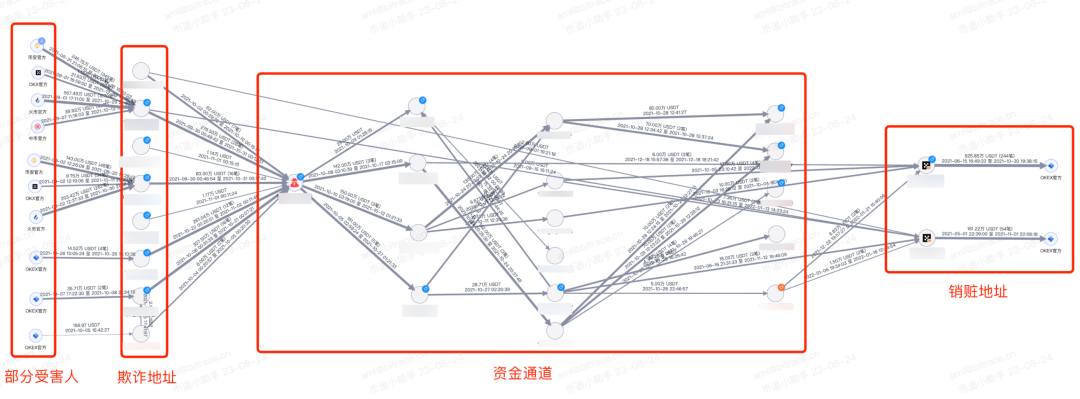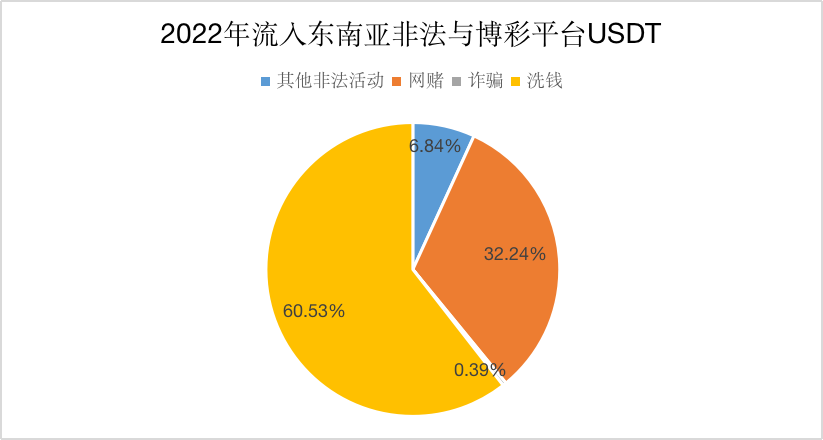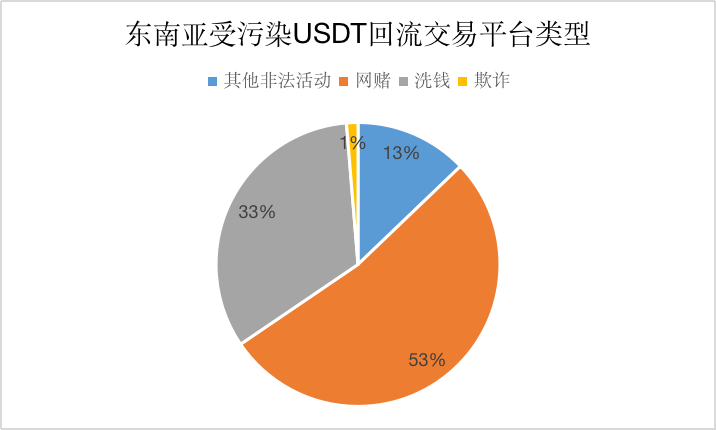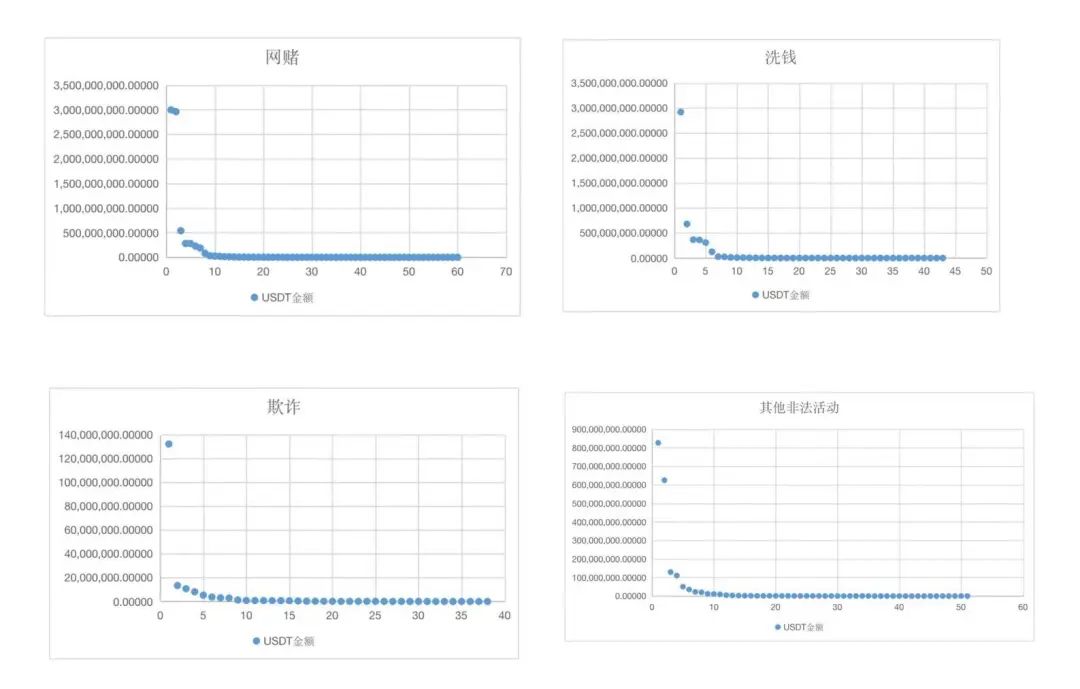"The Explosive Success of 'All In': The Billion-Dollar Cryptocurrency Black and Gray Market in Southeast Asia"
Author: Bitrace
Recently, the anti-fraud promotional film "All In" has become a sensation. The plot depicts an overseas scam gang using a beautiful persona to lure victims into participating in cryptocurrency pig-butchering schemes, defrauding them of their money. This, coupled with the recent exposure of Southeast Asia's black and gray industries, has resonated with countless viewers.
Art originates from life. As a new type of value carrier and transmission tool, cryptocurrency has been widely adopted by Southeast Asian criminal groups, appearing in activities that include online gambling, fraud, and money laundering. Its characteristics of anonymity, decentralization, and lack of borders make related illegal activities more covert and allow for quicker circulation of illicit funds, posing challenges for law enforcement.
Fortunately, blockchain ledger data is publicly transparent. Bitrace's crypto analysts can track funds involved in illegal crypto activities through on-chain analysis, based on extensive address tagging and open-source network intelligence. This article aims to demonstrate through data:
- Tether (hereinafter referred to as USDT) is widely used in illegal activities and gambling in Southeast Asia, with a scale exceeding 115 billion USDT in addresses monitored by Bitrace in 2022;
- The return flow of USDT transmits risks to more addresses and platforms, passively making them trading counterparties of illegal platforms, with over 14.6 billion USDT flowing into trading platform accounts in 2022;
- USDT flows out from illegal platform addresses in Southeast Asia, with major trading platforms passively bearing the main share, but operators and gamblers of Southeast Asian gray and black industry platforms, primarily Chinese, show a preference for a few exchanges.

Image | "All In"
Examples of Cryptocurrency Pig Butchering
The telecom fraud industry is the most well-known type of illegal industry in Southeast Asia. As a business expansion of fraud gangs in the new technology field, cryptocurrency pig-butchering (romantic scam) has frequently occurred in recent years. These scams often combine with investment fraud, where fraudsters search for targets online, create attractive personas, develop romantic relationships with victims, and then induce them to participate in cryptocurrency investments. After victims invest large sums of money, they often either incur "losses," are asked to pay "taxes," or are directly unable to withdraw their principal.
For example, in a pig-butchering scam that occurred in 2021 in Xiaoshan, Hangzhou, victims were lured to a platform called "Asia-Pacific Exchange" to participate in cryptocurrency investments. After purchasing USDT on other trading platforms and transferring it to this platform, the fraudsters manipulated backend data to make the victims' "profits" grow rapidly. During this process, they continuously urged victims to add more funds and demanded tax payments before allowing withdrawals. The victim, in an attempt to obtain returns, blindly borrowed and mortgaged property, ultimately investing USDT worth 12 million RMB, only to lose everything.

In fact, the persona that developed a romantic relationship with the victim was fictitious, the investment platform was fake, and the so-called "taxes" were nonsense. In subsequent fund analysis, we observed that more than one victim had encountered this scam, with the deposited funds quickly flowing into a money laundering address located in Laos after simple aggregation.
Cases like this, where victims suffer telecom fraud and illicit funds flow into Southeast Asia's money laundering operations in the form of cryptocurrency, are countless.
In 2022, Illegal Activities in Southeast Asia Involved Over 115 Billion USDT
Based on a large amount of on-chain high-risk address data and automatic tracing analysis technology, Bitrace has been continuously monitoring the inflow and outflow of funds related to some major black and gray industry platform addresses in Southeast Asia, timely identifying cryptocurrency funds related to illegal activities such as online gambling, fraud, money laundering, theft, extortion, and terrorism.

According to Bitrace's DeTrust risk data platform, in 2022, over 115 billion USDT flowed into certain Southeast Asian platform addresses, mainly including 37.16 billion in gambling funds and 69.78 billion in money laundering funds, with 460 million USDT related to fraud (some of which have been recorded and the funds have not been laundered).

Monthly data shows that the scale of funds throughout 2022 remained relatively stable, indicating that these cryptocurrency-related activities were not affected by fluctuations in the cryptocurrency market, achieving a degree of "crossing bull and bear." This may suggest that participants or victims are not truly cryptocurrency investors in the conventional sense.
In 2022, 14.6 Billion Contaminated USDT Flowed Back from Southeast Asia
Earlier, Bitrace disclosed that incidents involving gambling on the Tron network polluted data on major centralized trading platforms using USDT as a medium. With the continuous increase of illegal entity address tags and tracking analysis of related address funds, we obtained more comprehensive pollution data using USDT as a medium by adding more network and trading platform addresses.

According to Bitrace's DeTrust risk data platform, in 2022, over 14.64 billion contaminated USDT flowed directly or indirectly from known Southeast Asian entity-related addresses into centralized trading platforms. This includes 7.71 billion USDT in gambling funds, 4.86 billion USDT in money laundering funds, 1.88 billion USDT in other illegal activity funds, and a small amount of 190 million USDT related to fraud.

Image | Scatter plot of risk fund data received by various trading platforms (horizontal axis)
The pollution of risk funds to cryptocurrency trading platforms also follows the Matthew effect. Among them, the largest platform, referred to as "Platform A," received more contaminated USDT from Southeast Asia, including 38.87% of gambling funds, 60.02% of money laundering funds, 43.94% of other illegal activity funds, and 70.59% of fraud funds.
Beyond volume factors, certain USDT contaminated by specific categories also show preferences for different trading platforms. For example, "Platform B," which has a business volume of 12% of "Platform A" and serves a large number of Chinese users, received 33.24% and 38.39% of funds from other illegal activities and gambling, respectively, nearly equivalent to "Platform A." This may be due to the fact that most operators of Southeast Asian gray and black industry platforms, gamblers, casino agents, and four-party payment platform operators providing cryptocurrency settlement for casinos are Chinese, leading to a disproportionate inflow of related funds relative to business volume.
Final Thoughts
Our industry is facing severe challenges in anti-money laundering. The well-known mixing platform TornadoCash was sanctioned by the U.S. Treasury for allegedly assisting certain hackers in money laundering. Earlier, several centralized or decentralized crypto institutions were sued by government agencies for indirectly providing services to hackers. For other crypto entities, compliance may be the only future.











